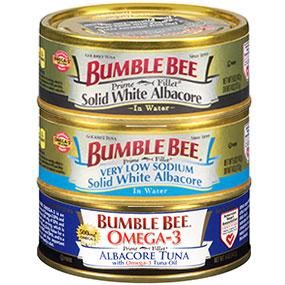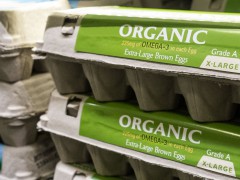by Jason Foscolo
Labels that do not comply with federal regulations are a significant source of legal liability for food businesses. Even established giants like Bumble Bee Foods fail to understand this from time to time.

Going All-In on the Omega Claim
Bumble Bee is currently engaged in a lawsuit alleging that its canned and pouched tuna product labels were misbranded and mislead consumers. At the time when the lawsuit was filed, Bumble Bee claimed that its product was an “Excellent Source” of omega-3 fatty acids. As we know from having reviewed lots of labels for clients over the years, omega-3 claims are tricky to make on a food label.
Claims like “excellent source,” which characterize the level of a nutrient in a food, are always defined as a percentage of the daily value for the nutrient. An “excellent source” claim may be made when a food contains at least 20% of the recommended daily intake (RDI). Therefore, if there is no established daily value for a nutrient, it is not permissible to claim that a food is “high in,” an “excellent source,” or “rich in” the nutrient. While the FDA has established RDIs for certain nutrients, including sodium, vitamin C, and fiber, there is no established RDI at present for omega-3 fatty acids generally. For that reason, Bumble Bee’s claim – regardless of the actual Omega-3 content of the product – was facially defective.
As discussed on our blog, FDA announced this past summer that it would not take exception to “high,” “good source,” and “more” claims specifically for ALA, an omega-3 fatty acid, in certain circumstances. However, all other claims that characterize the level of omega-3s are prohibited.
There is a way to talk about the omega-3 content of the product without the legal exposure. A manufacturer may make a statement about a nutrient for which there is no established daily value as long as the claim specifies only the amount of the nutrient per serving and does not implicitly characterize the level (such as, by saying “high” or “excellent source”) of the nutrient in the product. Such a claim might be “x grams of omega-3 fatty acids.”
This seems like a simple distinction to make but getting it wrong has big implications. No claim should ever go onto a food label without a thorough review from someone familiar with the regulations.

















